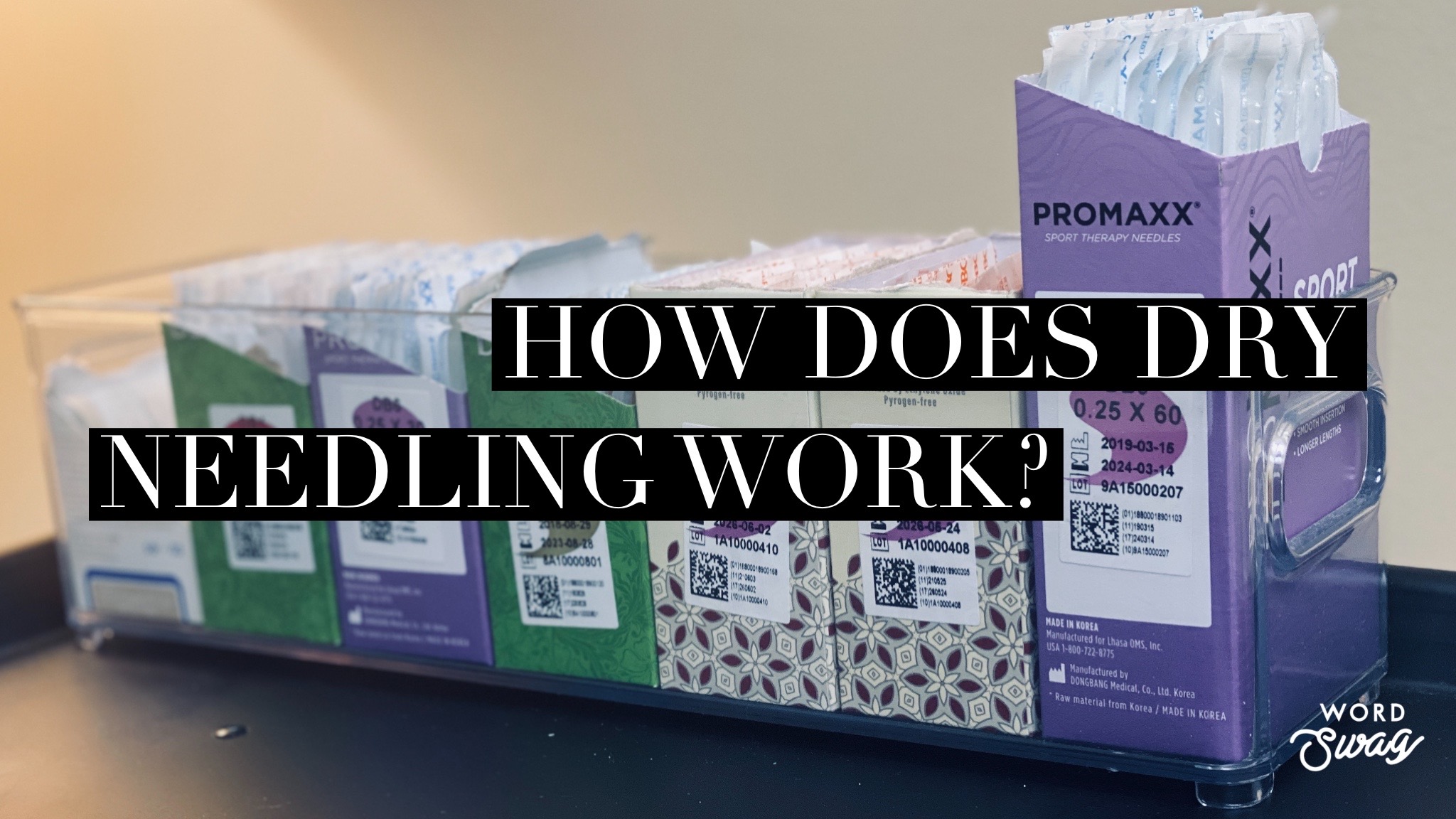
How Does Dry Needling Work?
Dry needling can be very beneficial for relieving pain and muscle discomfort, but how does dry needling actually work? In this post, I’ll provide some simplified explanations of how dry needling works based on our current knowledge and research.
A Simple Explanation of How Dry Needling Works
When I explain dry needling to you, or a patient, I usually try and simplify it as much as possible. Most patients aren’t interested in the detailed scientific mechanisms of how dry needling works. They usually want to know:
- What is it?
- What does it cost? (At my office in Dumfries dry needling is really affordable)
- How long will it take?
This is how I usually explain dry needling:
“I’m going to use small acupuncture needles, much smaller than the needles used when drawing blood, and place them in muscle trigger points. Trigger points are small bundles of muscle fibers that produce local or referred pain and are deficient of blood and oxygen. The small group of muscle fibers are stuck in a contracted state and do not return to normal muscle length and function. Because of this, they restrict mobility of the muscle and surrounding joints and produce pain. If we can reduce these trigger points, we can improve your pain. The needles also have a central effect in that they cause your body to release chemicals in your brain and spinal cord that are your body’s natural pain relievers.”
You might have a few follow up questions about dry needling and what to expect. Of course, I cover the side effects, usually some muscle soreness or sometimes light bruising. However, I do think it’s worth looking into what we know about what’s happening from a physiological standpoint, and that’s what I’ll discuss next.
What Does Dry Needling Feel Like?
If you’re interested in trying dry needling, you’re probably wondering, what does dry needling feels like? Here’s a video demonstrating dry needling to the upper trapezius muscles that I posted a little while ago.
What Happens During Dry Needling?
Let me point out that the exact mechanism that dry needling affects your body is not known for sure. It’s also worth noting that the way dry needling affects your body is likely the same or similar to acupuncture. The difference between dry needling and acupuncture mostly comes down to the theory behind treatment, but that’s a whole discussion in itself. Here are a few ideas based on our current knowledge, about how dry needling works and trigger points (simplified):
- Trigger points are hypersensitive and send a greater degree of incoming signals into what’s called the dorsal horn of the spinal cord. This activates “silent” connections in the muscle or surrounding muscles increasing your perception of pain in that region. Dry needling reduces trigger points and thus “tones down” those neural signals.
- Release of a neurotransmitter called acetylcholine affects the formation of a tight band of muscle fibers. These are felt as a muscle knot or trigger point. There is subsequently a loss of blood flow and oxygen to the area of the muscle. This keeps the muscle fibers from functioning normally. Dry needling may affect this process and restore a normal environment to the muscle fibers.
- The stimulation of the dry needle insertion blocks the pain sensation that is being transmitted, essentially overriding it. This is called the gate pain control theory. At the same time, it results in the increase of the body’s natural opioids relieving pain (endorphins, enkephalins, serotonin, and acetylcholine.)
- Dry needling may affect connective tissue, the thin tissue layers that surround muscles and other structures in the body that are capable of translating tension. This may cause cells to release substances in the body and change the sensory inputs into the spinal cord and brain of the connective tissue in beneficial ways.
- There are many areas of the brain involved in interpreting and processing pain signals from the body. These may be “deactivated” or “modulated” resulting in a decrease in pain intensity perception. An area in the cortex of the brain called the somatosensory cortex may increase its pain mitigating ability with the treatment of dry needling.
As you can see, there are many processes thought to be involved in the effects of dry needling. Most of them are pretty complicated to understand without a medical background, which is why I keep the explanation simple with patients.
Does Dry Needling Work?
Does dry needling work is a silly question. There are a lot of factors that determine if it’s an appropriate treatment for you, but I’ll do my best to answer this question for you…
Dry needling DOES work for many people, but there’s always the possibility it may not help you. It’s not usually used as a stand-alone therapy. Your recovery will progress a lot faster when it’s combined with other therapies like exercises and chiropractic adjustments/manipulation.
I always recommend seeking out a provider who practices dry needling and getting a thorough exam first to see what the best strategy is for you. If you’re interested in dry needling in Dumfries, VA or the surrounding area feel free to reach out or schedule with me, I’d love to help.

Jason Williams DC is a licensed Doctor of Chiropractic with Physical Therapy Modality and Acupuncture privileges. He is a chiropractor in Dumfries, VA at Sentara Therapy Center. Dr. Williams’ clinical expertise is in the evaluation, treatment, and rehabilitation of neuro-musculoskeletal conditions. Specific focuses include spinal, extremity, and sports-related complaints. He brings a patient-first attitude to his treatments and is a proponent of evidence-based and integrative care. See more content and his contact info here.
The opinions and views are mine personally, and do not necessarily reflect the views of others in the profession, my employer, or organizations that I belong to.
